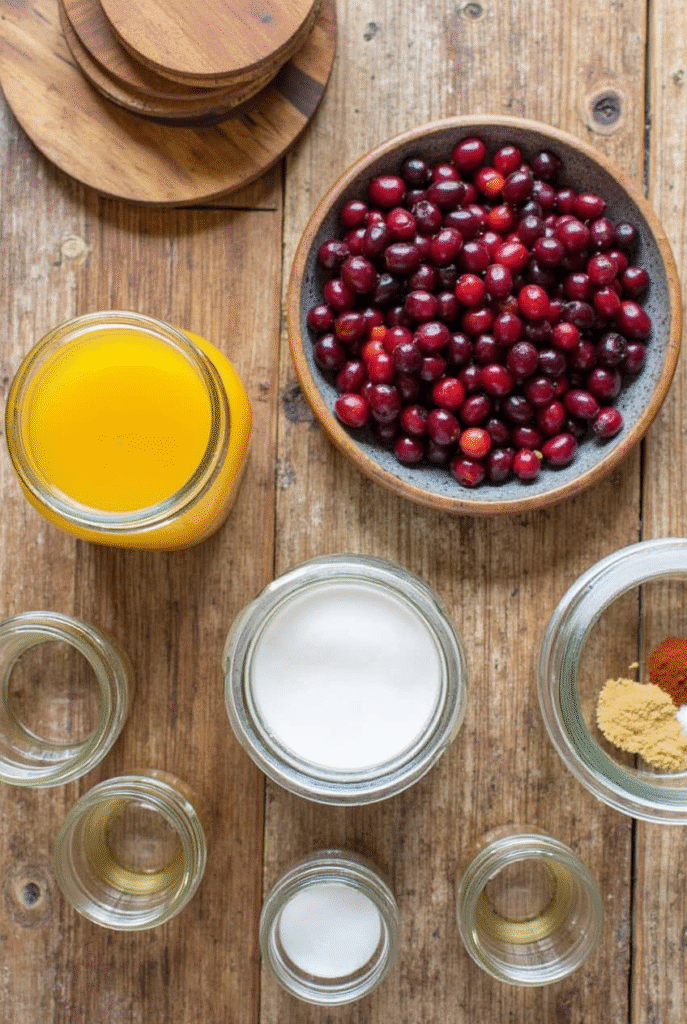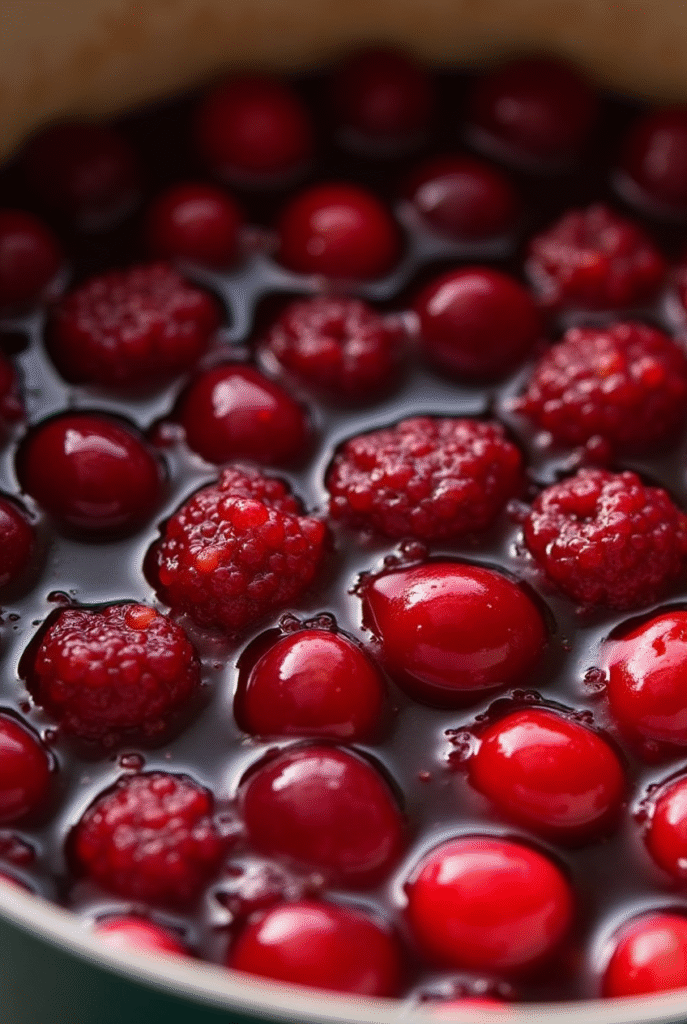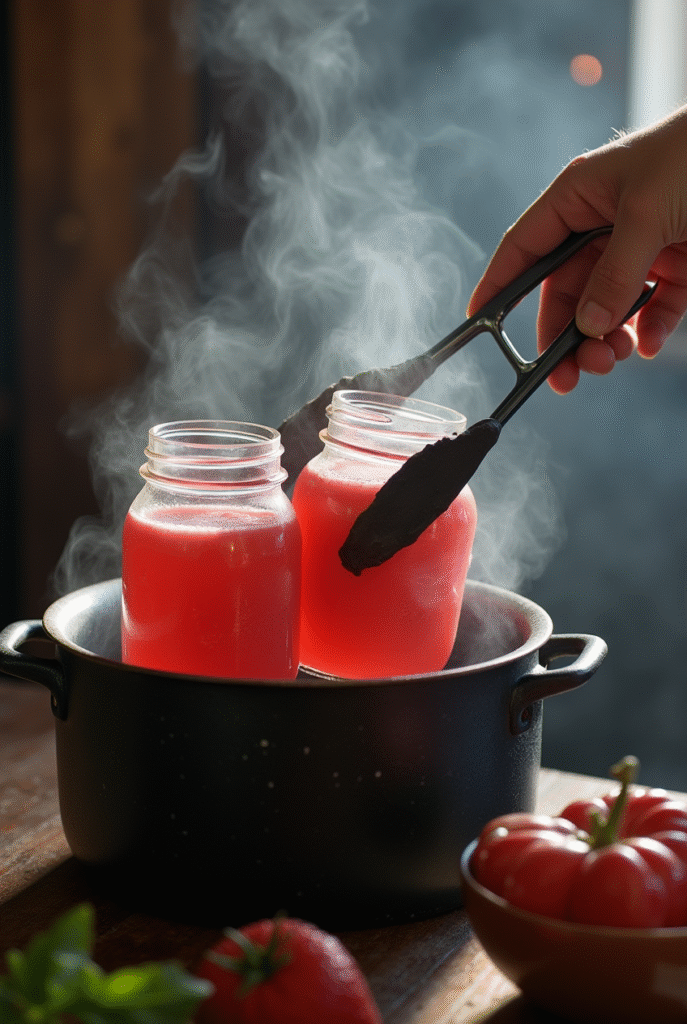Every fall, vibrant red cranberries flood the market, signaling that holiday season is just around the corner. Whether you’re planning a classic Thanksgiving feast or simply want to enjoy their tart flavor year-round, canning cranberry sauce is the perfect solution. Not only does this method allow you to preserve their peak-season freshness, but it also provides a healthy, homemade alternative to sugary store-bought varieties.
Table of Contents
Table of Contents
Moreover, this guide is more than just a recipe—it’s a complete roadmap to safe canning, creative variations, and time-tested tips. By the end, you’ll know exactly how to prepare, jar, and enjoy your own cranberry sauce all year long.

Why You Should Be Canning Cranberry Sauce
Although cranberry sauce is often associated with Thanksgiving dinner, its uses go far beyond a holiday plate. When canned properly, it can become a versatile condiment for meats, sandwiches, cheese platters, and even baked goods.
Furthermore, canning cranberry sauce gives you complete control over what goes into your food. That means fewer preservatives, adjustable sweetness, and the ability to personalize the flavor profile to match your own taste. For example, adding orange zest, warm spices, or even apples can create new and exciting versions of this beloved side dish.
Altogether, home canning also supports sustainability. By preserving your own cranberries, you reduce food waste and plastic packaging. Additionally, it’s a budget-friendly way to extend seasonal ingredients into the off-season.
Finally, beautifully canned cranberry sauce makes a thoughtful holiday gift. Tied with a ribbon and labeled with love, a small jar can delight friends and family at any celebration.
For more delicious ideas and other seasonal recipes, don’t miss our full collection at Cook’s Canvas Recipes.
Ingredients and Instructions: How to Can Cranberry Sauce at Home
Although canning may sound complex, the process is surprisingly approachable, even for beginners. With a short list of ingredients and basic kitchen tools, you can preserve this tangy-sweet treat with confidence.

Essential Ingredients for Canning Cranberry Sauce
| Ingredient | Amount | Notes |
|---|---|---|
| Fresh cranberries | 4 cups | Rinse and remove soft or bruised berries |
| Granulated sugar | 2 cups | Adjust to taste or substitute with honey |
| Orange juice or water | 1 cup | Adds acidity and flavor contrast |
| Orange zest (optional) | 1 tsp | Enhances brightness and citrus aroma |
| Cinnamon or spice blend | ½ tsp | Optional for a warm, festive twist |
Tip: If you plan to make a smoother sauce, you can also use a food mill or immersion blender after cooking.
Step-by-Step Instructions: Canning Cranberry Sauce Made Easy

1. Prepare Your Equipment
Firstly, gather your mason jars, lids, rings, and canning tools. Wash everything in hot soapy water. Then sterilize the jars by placing them in a boiling water bath for at least 10 minutes. Keep the jars hot until ready to use.
Additionally, prepare a water bath canner by filling it with enough water to submerge your jars by at least one inch. Begin heating the water now, so it’s ready once your jars are filled.
2. Cook the Cranberries
In a large, heavy-bottomed saucepan, combine the fresh cranberries, sugar, and your liquid (orange juice or water). Turn the heat to medium-high and bring the mixture to a boil, stirring frequently. Soon, the cranberries will begin to pop and release their juices.
After about 10 minutes, reduce the heat and simmer. Stir regularly to prevent sticking. As the sauce thickens, use a spoon or masher to gently break down any whole berries.
Tip: For a refined texture, use an immersion blender to smooth the sauce. Conversely, if you like a chunkier version, leave some berries whole.
3. Fill and Seal the Jars
Once your sauce reaches the desired consistency, ladle it into the hot, sterilized jars. Always leave about ¼ inch of headspace to ensure proper sealing. Wipe the rims with a clean, damp cloth to remove any residue.
Next, place the lids on top and screw on the rings until they’re just fingertip-tight—not too loose, not overly tight.
4. Process in a Water Bath
Carefully lower the filled jars into the boiling water bath using a jar lifter or tongs. Make sure the jars are completely covered by water. Process them for 15 minutes (adjusting for altitude as needed).
After the time is up, turn off the heat and let the jars sit for about 5 minutes. Then, remove them and place them on a towel-lined surface to cool undisturbed for at least 12 hours.
Important: You’ll often hear a popping sound as the jars seal. This is a good sign! After cooling, press the center of each lid. If it doesn’t move, the seal is successful.
5. Label and Store
Once sealed, label each jar with the date and contents. Store in a cool, dark pantry. Properly canned cranberry sauce can last 12 to 18 months without refrigeration.
Storage Tip: If any jar doesn’t seal properly, refrigerate and use within two weeks.
Why Cranberries Are Perfect for Canning
Altogether, cranberries are one of the easiest and safest fruits to can at home. Because of their naturally high acidity (pH below 4.6), they don’t require pressure canning. Instead, a simple water bath ensures shelf stability and safety.
Moreover, cranberries are high in pectin, which helps the sauce gel naturally without needing thickeners. This makes the process even more beginner-friendly. Compared to other fruits, you’ll find cranberry sauce thickens nicely without much effort.
Fun Fact: According to the USDA, high-acid fruits like cranberries are considered some of the safest for home canning because they discourage harmful bacteria such as Clostridium botulinum.
Additionally, cranberries hold their shape and color during cooking, creating a visually striking sauce that’s both beautiful and delicious.
Creative Flavor Variations to Try
Although classic cranberry sauce is a seasonal favorite, experimenting with flavors can make it even more versatile and exciting. Below are a few options you can easily incorporate into your batch:
- Apple-Cranberry Sauce: Add one peeled, chopped apple to the pot along with the cranberries for a sweeter profile and added texture.
- Spiced Wine Cranberry Sauce: Replace the orange juice with mulled red wine. Then simmer with cinnamon, cloves, and orange zest for a rich, complex twist.
- Citrus Explosion: Mix in lemon and lime zest in addition to orange. Consequently, you’ll get a tangy, refreshing flavor.
- Vanilla & Maple: Add a splash of vanilla extract and replace half the sugar with pure maple syrup for a dessert-style sauce.
Each of these adds a signature flair to your cranberry preserves and allows you to tailor the sauce to any occasion—from cozy winter brunches to elegant dinner parties.
Avoid These Common Mistakes in Canning
Although the process is simple, several missteps can compromise safety or quality. Therefore, be sure to avoid these common pitfalls:
- Skipping Sterilization: Always clean and sterilize your jars, lids, and tools. Unclean equipment increases the risk of spoilage.
- Incorrect Headspace: Leaving too much or too little space at the top can cause seals to fail. Always aim for ¼ inch.
- Not Boiling Long Enough: Under-processing jars can lead to unsafe preserves. Stick to the recommended boiling time.
- Improper Storage: Store jars in a cool, dry, and dark place. Heat or light can degrade both seal integrity and flavor.
Pro Tip: When in doubt, refrigerate jars that don’t seal properly. It’s better to be safe and enjoy the sauce fresh than risk spoilage.
Helpful Tips for Success
Even though the basics are easy, the following tips will take your cranberry canning to the next level:
- Always Test Seals: After jars cool, press the center of the lid. If it pops up and down, it didn’t seal. Refrigerate and use that jar first.
- Label Everything Clearly: Include the date and a note about any flavor variations used. This is especially helpful if you’re gifting.
- Start Small: If you’re new to canning, begin with a half-batch. It’s less overwhelming and lets you practice techniques.
- Double Up at Holiday Time: Prepare a few extra jars to give away. Homemade cranberry sauce is always a crowd-pleaser!
How to Make Canning Cranberry Sauce Step-by-Step (Continued)
After preparing your cranberry sauce and filling the jars, it’s time to focus on the crucial final stages of the canning process. These next steps are where your efforts turn into long-lasting results, so following them precisely ensures success.
Water Bath Canning: Finalizing Your Preserves
After that, bring your large pot of water to a rolling boil. Carefully lower your sealed jars into the canner using jar lifters. Always ensure the jars are upright and completely submerged in water by at least one inch. Additionally, be mindful of spacing; jars should not touch each other.
Then, cover the pot and process the jars for 15 minutes. This time starts once the water reaches a full boil. If you live at an elevation above 1,000 feet, adjust the processing time accordingly. For instance, increase the time by 5 minutes for every additional 1,000 feet in elevation.
After processing, turn off the heat and let the jars rest in the water for 5 more minutes. This helps prevent rapid temperature changes, which could crack your jars or interfere with sealing.
Next, remove the jars with your lifter, holding them upright. Place them on a towel-lined surface and let them cool for at least 12 to 24 hours, undisturbed and out of direct sunlight.
Pro Tip: Never attempt to speed up cooling by refrigerating or placing jars near a fan. Gradual cooling is essential for proper sealing.
Storage Tips and Long-Term Organization
Once your jars have cooled, check the seals by pressing the center of each lid. If the lid doesn’t pop up and down, it’s sealed correctly. Unsealed jars should be refrigerated and consumed within two weeks.
Additionally, label each jar with the date and batch type. Use a permanent marker or waterproof labels to avoid fading. This step may seem minor, but it’s crucial for proper pantry management.
Also, consider organizing your pantry by placing the oldest jars toward the front. This method—known as FIFO (first in, first out)—ensures you use older preserves before newer ones. It minimizes waste and helps track freshness.
Safety Reminder: Always inspect jars before use. If a seal breaks or if there’s any mold, off-smell, or discoloration, discard the contents immediately.
For more inspiration on how to serve your canned creations, explore the wide variety of savory mains and seasonal sides available in our recipe collection.
Pro Tips and Creative Variations for Canning Cranberry Sauce
![Image 6 – Holiday Serving Suggestion Placeholder]
Adding a personal twist to your cranberry sauce not only elevates its flavor but also makes it memorable. Whether you prefer sweet, tart, spiced, or boozy blends, the possibilities are endless.
Flavor Profiles to Explore
- Maple Bourbon Cranberry Sauce: Substitute some of the sugar with real maple syrup and add a splash of bourbon after cooking. As a result, you’ll enjoy a smoky, smooth finish that pairs well with grilled meats.
- Ginger Citrus Fusion: Grate fresh ginger and add both lemon and lime zest for a bright, spicy twist. This variation works great with fish dishes or atop warm brie.
- Smoky Chipotle Cranberry Sauce: Stir in a bit of canned chipotle in adobo for heat and depth. Although unconventional, this spicy version adds a bold contrast to roast turkey or pork tenderloin.
Serving Ideas and Pairings
Canned cranberry sauce isn’t limited to holiday meals. Consider spreading it on sandwiches, using it as a glaze for meatloaf, or stirring it into oatmeal. It also complements cheese platters beautifully, especially when paired with brie, goat cheese, or sharp cheddar.
Also, for an elevated brunch dish, warm your cranberry sauce and drizzle it over fluffy pancakes or French toast.
FAQs About Canning Cranberry Sauce
Can cranberry sauce be canned?
Absolutely, cranberry sauce can be safely canned using the water bath method. Because cranberries are high in acid, they don’t require pressure canning. Just be sure to follow safe canning guidelines and use sterilized jars.
Are cranberries high acid for canning?
Yes, they are. Cranberries have a pH level between 2.3 and 2.5, which is well within the safe range for water bath canning. Their acidity naturally inhibits bacterial growth.
How far ahead can you make cranberry sauce with fresh cranberries?
You can make and can cranberry sauce up to a year or more in advance. When stored in a cool, dark place, canned cranberry sauce remains shelf-stable for 12 to 18 months. Therefore, you can prepare it well before the holiday rush.
How long will canned cranberry sauce last?
Properly sealed jars can last between 12 and 18 months in storage. After opening, refrigerate the sauce and use it within 7 to 10 days.
Can I use frozen cranberries instead of fresh?
Yes, you can. Frozen cranberries work just as well and are available year-round. Just thaw them first and drain any excess moisture before cooking.
What’s the difference between cranberry compote and cranberry sauce?
Although both are similar, compote tends to be chunkier with larger pieces of fruit and often includes other fruits or spices. Cranberry sauce is typically smoother and often sweeter.
Is it safe to can low-sugar or no-sugar cranberry sauce?
Generally, yes. However, reduced-sugar recipes should follow tested canning guidelines to ensure safety. Adding lemon juice can help maintain proper acidity.
Do I need to add pectin?
No, cranberries are naturally rich in pectin, which means your sauce will gel on its own after cooking. For thicker consistency, simmer a bit longer.
What’s the best way to know if a jar sealed correctly?
Once the jars are cool, press the center of each lid. If it stays flat and doesn’t flex, it’s sealed. Unsealed jars should be refrigerated and consumed quickly.
Can I reuse lids for another batch?
No. Lids are designed for one-time use. Reusing them can compromise the vacuum seal, which increases the risk of spoilage or contamination.
Conclusion
Canning cranberry sauce is not only a satisfying and practical skill but also a way to bring homemade charm to your pantry and holiday table. With just a few simple ingredients and the right technique, you can preserve the tart-sweet goodness of cranberries for months.
By customizing flavors, mastering water bath canning, and paying attention to storage and safety, you’ll find this process both easy and rewarding. Whether you’re gifting a jar or opening one at Thanksgiving, the taste of homemade cranberry sauce is unmatched.
All things considered, it’s a perfect blend of tradition, creativity, and resourcefulness—one that every home cook should experience.



